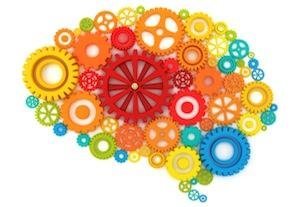 Some time ago, Susan Weinschenk (@thebrainlady in Twitter) wrote about the psychologist view of UX design, listing a number of facts discovered by psychology about the human mind that may be directly applied to interfaces design. And I think that’s an important point; although usability experts try to put the user in the center of every step through the design process, principles and best practices are usually referred to technical aspects of the development of interfaces. That’s what happens with most of the principles used when evaluating interfaces in heuristic evaluations.
Some time ago, Susan Weinschenk (@thebrainlady in Twitter) wrote about the psychologist view of UX design, listing a number of facts discovered by psychology about the human mind that may be directly applied to interfaces design. And I think that’s an important point; although usability experts try to put the user in the center of every step through the design process, principles and best practices are usually referred to technical aspects of the development of interfaces. That’s what happens with most of the principles used when evaluating interfaces in heuristic evaluations.
So… why don’t we use those psychological facts as heuristic principles when evaluating interfaces, instead of the typical technical ones? To that end, I have translated Susan’s points into heuristic principles and checkpoints that may be used to evaluate interfaces, creating a spreadsheet to make evaluations easier. Here you have it:
Psychological Usability Heuristics spreadsheet (Google Docs)
Of course, the translation of facts into heuristics is subjective, and this work may be updated and/or expanded at any time; anyway, I think this may be a good approach to usability from a more human perspective.
Feel free to use this spreadsheet for your own work (you may have to download or make a copy before). Any feedback about this work will be welcome!
Update 19-sep-2011
I have contacted Susan Weinschenk explaining her this idea, and this is her kind reply:
Hi Jordi,
Thanks for writing.
It’s a very interesting idea. I’m surprised I didn’t think of it myself!
Have you read my book: 100 Things Every Designer Needs To Know About People? Probably more ideas in there too.
Susan
I haven’t read ‘100 Things‘ (yet), but I have read her previous book and multiple articles in her blog. I wonder if 100 things may lead to 100 heuristic principles. It seems like a lot of work for me alone; maybe if this first idea achieves some success…

Hi Jordy,
I’m surprised that no one else has commented about how useful your sheet has been over the last few years since it was published. I also didn’t realise that you could embed Google Docs! In addition: you hotlink to a graphic from Susan Weinschenk’s UX Mag article that is now broken (cell A1).
Rik,
I’m really glad to hear that sheet has been useful; actually I don’t have any feedback of it being used or not 🙂 Do you know my tool UCDmanager? http://ucdmanager.net It may be useful too.
PS: I have fixed that image; thanks
Jordy,
I just found your blog and it is madly fun and interesting and terribly valuable!
This is just what I need for learning more and more, digging deeper into UX and HCI.
Millions thanks for this.
Anyway, have you read the book yet – “100 Things Every Designer Needs To Know About People” ?
I am considering buying the book. I am as keen as mustard to buy it but I don’t wanna waste money on that too. Believe it or not, here 50 bucks are that much.
Thank you again for the sheet!
Hoping you’re well,
Edward
Edward, thanks a lot.
I read it a couple of years ago and yes, I think it’s quite good, but you might want to read this one first: http://www.amazon.com/Neuro-Web-Design-Makes-Click/dp/0321603605 (which is kind of previous).
Regards!
Thank you so very much Jordi for providing this helpful chart! I’m fairly new in the field of UX research, especially understanding heuristic evaluations. I see that even in 2020, your chart is still going strong based on the feedback from users that I’ve read.
Pingback: Assessing Digital Maturity Research - Digital Arts Nation
Pingback: RIA (Rich Internet Applications) usability heuristics | jordisan.net